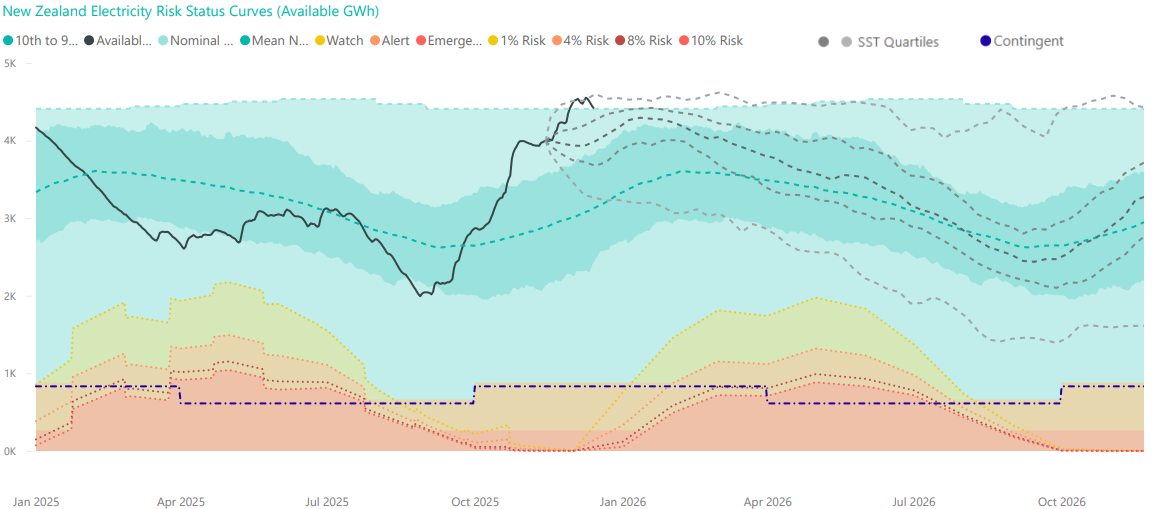The Energy Security Outlook (ESO) is a monthly report that helps track how secure New Zealand’s electricity supply might be over the next two years. It uses two key tools, the Electricity Risk Curves (ERCs) and Simulated Storage Trajectories (SSTs), to show how likely it is that we’ll have enough electricity, especially during dry periods when hydro lakes are low.
For more information on how it works and why it matters, we have published an 'ESO 101' document that covers how ERCs and SSTs help forecast electricity risks, what triggers action when supply looks tight, and how extra hydro storage can be used if needed.
November 2025 Energy Security Outlook
- The national controlled hydro storage position remains very high and now sits at 142% of the historic mean at 26 November. South Island storage is at 141%.
- The Commerce Commission has issued its final determination authorising the Strategic Energy Reserve Huntly Firming Option agreements between the gentailers. This is reflected in this Energy Security Outlook, with all three Rankine units remaining available throughout the outlook horizon (and beyond) except for outages.
- There has been little change to the security of supply situation since the October Energy Security Outlook. The Electricity Risk Curves (ERCs) for 2026 are slightly lower than in last month's update, with higher starting coal and gas storage. However, a decrease in forecast gas production has resulted in a small increase in the Watch curve in February 2026. The risk curves for the remainder of 2025 are unchanged and are set by the Alert and Emergency floors reflecting energy held in contingent hydro storage.
- No Simulated Storage Trajectories (SSTs) cross the Watch curve in 2025 or 2026. This assumes the market supplements the existing coal stockpile at its maximum import capability to maintain increased thermal generation during low hydro inflows.
- Looking ahead to winter 2026, an ongoing focus on hydro storage management and ensuring sufficient backup thermal fuels and capacity to support increased thermal generation under any extended periods of low inflows remains necessary to mitigate the potential for very high prices.
The graphs below compare New Zealand and South Island controlled storage to the relevant Electricity Risk Status Curves.
Image

Image

Related Files
Energy Security Outlook Data Files
Assumptions and Update Logs
- Scenarios
- Historic Logs